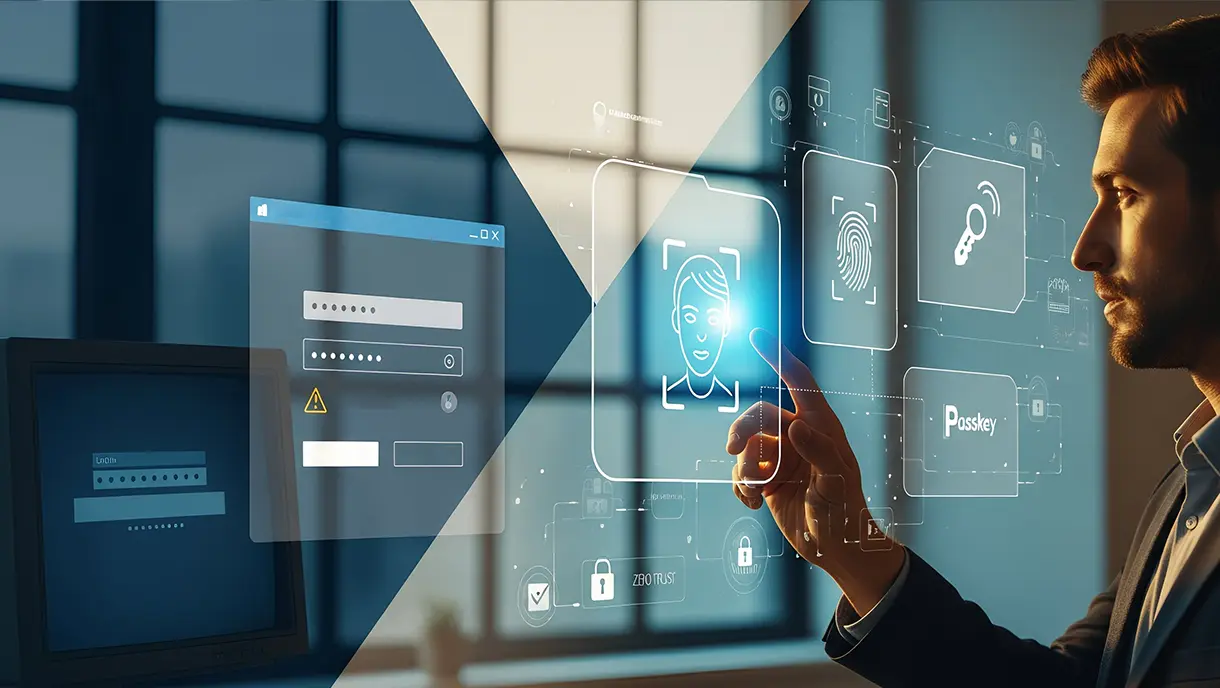What is Operational Security?
Operational Security (OPSEC) protects sensitive information by thinking like a hacker to find and fix vulnerabilities. It involves identifying critical data, assessing threats, analyzing weaknesses, and implementing countermeasures. Originally used in the military, OPSEC is now essential in business to prevent data breaches, legal issues, and financial loss. Best practices include restricting access, automating tasks, conducting audits, and training employees. Tools like OLOID offer modern, mobile-friendly access control to support strong operational security.

In an era of constant digital threats, protecting sensitive information requires more than just firewalls and antivirus software. It requires strategic thinking—viewing your organization through the eyes of a potential attacker.
That’s the essence of Operational Security (OPSEC). Originally developed by the U.S. military to protect mission-critical information, OPSEC is now widely adopted across the business world to prevent data leaks, sabotage, and unauthorized access.
By identifying vulnerabilities before they’re exploited, OPSEC helps organizations secure sensitive assets, build resilience, and stay compliant with global security standards.
Why Operational Security Matters
According to the IBM Cost of a Data Breach Report 2023, the global average cost of a data breach is $4.45 million, the highest on record. In many cases, breaches stem from basic oversights—weak access policies, social engineering, or accidental leaks.
Operational Security helps mitigate this risk by implementing a structured process to:
- Identify and protect sensitive data
- Anticipate and analyze potential threats
- Strengthen processes and access controls
- Ensure compliance with frameworks like ISO 27001, HIPAA, GDPR, and NIST SP 800-53
The 5 Steps of Operational Security
OPSEC is built on five clear and actionable steps that any organization—regardless of size or industry—can follow.
1. Identify Critical Information
Determine what data must be protected. This could include:
- Trade secrets and product R&D
- Financial reports or projections
- Login credentials and access keys
- Customer or employee records
- Facility entry/exit schedules
2. Analyze Threats
Who might want to gain unauthorized access to your information?
- Cybercriminals targeting customer or payment data
- Nation-state actors interested in intellectual property
- Competitors conducting corporate espionage
- Malicious insiders or third-party vendors
3. Identify Vulnerabilities
Assess how attackers could exploit weaknesses in your systems or processes:
- Poorly managed user access or shared credentials
- Unpatched software or outdated hardware
- Unsecured IoT or physical access points
- Oversharing of sensitive data on email or social media
4. Assess the Risk
For each identified vulnerability, calculate:
- Likelihood of exploitation
- Potential impact on business operations, finances, and reputation
- Time and cost required to recover
This helps prioritize security efforts based on real business risk.
5. Apply Countermeasures
Finally, implement safeguards to reduce the risks. This includes:
- Updating access controls and patching systems
- Using least-privilege principles for employee access
- Training staff on phishing awareness and data handling
- Deploying monitoring tools to detect unusual activity
Best Practices for Operational Security
Organizations that lead in OPSEC combine strategy with execution. Key practices include:
Enforce Least Privilege Access
Give users only the permissions necessary for their roles. According to NIST, overprovisioned access is a top contributor to internal breaches.
Use AAA Protocols
Authentication, Authorization, and Accounting (AAA) ensures that users are verified, access is limited by policy, and actions are tracked.
Monitor Continuously
Deploy continuous monitoring for devices, networks, and access points to detect unauthorized changes or threats in real time.
Separate Duties with Dual Control
Ensure no single employee can complete critical tasks alone, especially those involving sensitive data, funds, or system configurations.
Conduct Regular Security Audits
Independent audits uncover blind spots, validate compliance, and verify that policies are being followed in practice—not just on paper.
How OLOID Enhances Operational Security
OLOID is a workforce identity and access platform that directly supports Operational Security initiatives—especially in shared device, hybrid, and frontline environments.
Key Capabilities:
- Secure Access Management: OLOID enforces passwordless, identity-based access using facial authentication, PIN, badge, or QR code—even on shared workstations or kiosks.
- Bluetooth Low Energy (BLE) Support: Enables touchless authentication for physical and digital spaces, reducing contact and improving hygiene in workplaces like healthcare and manufacturing.
- Policy-Driven Controls: Define exactly who can access what system, at what time, and from which location—supporting compliance with NIST, HIPAA, and GDPR.
- Centralized Logging and Auditing: All access activity is logged, making it easy to conduct audits and investigate anomalies in real time.
- No Mobile Dependency: Unlike some authentication tools that require smartphones, OLOID works seamlessly without personal devices—ideal for frontline and shift-based environments.
OLOID helps organizations enforce core OPSEC principles like least privilege, continuous monitoring, and identity assurance at scale.
Frequently Asked Questions (FAQs)
1. What is Operational Security (OPSEC)?
OPSEC is a structured approach to identifying and protecting sensitive information by analyzing potential threats and vulnerabilities. It originated in the military and is now widely used in business and IT security.
2. How is OPSEC different from cybersecurity?
Cybersecurity focuses on securing systems and data from digital threats. OPSEC complements it by focusing on how information flows, who has access, and where vulnerabilities might exist in human behavior, physical access, or communication.
3. What kind of data does OPSEC protect?
OPSEC protects any information that could be valuable to adversaries, including financial records, customer information, source code, product roadmaps, access credentials, and internal communication.
4. Why is OPSEC important for compliance?
OPSEC supports compliance with major frameworks like ISO/IEC 27001, HIPAA, GDPR, and NIST SP 800-53, all of which require structured risk assessments, access controls, and security monitoring.
5. Who is responsible for OPSEC in an organization?
IT and security teams typically lead OPSEC efforts, but all employees have a role. Security awareness training and internal policies are critical to successful OPSEC implementation.
6. How does OLOID support OPSEC?
OLOID strengthens access control by providing passwordless, policy-enforced authentication across shared and mobile-restricted environments. It supports identity-based access without relying on personal devices and offers detailed logs for compliance and audits.
Conclusion
Operational Security is about outthinking potential attackers. It requires viewing your organization’s data, systems, and people as a hacker might—and then taking proactive steps to protect them.
By combining structured policies, employee training, and modern tools like OLOID, companies can reduce risk, strengthen compliance, and build long-term resilience against evolving threats.
Get the latest updates! Subscribe now!








